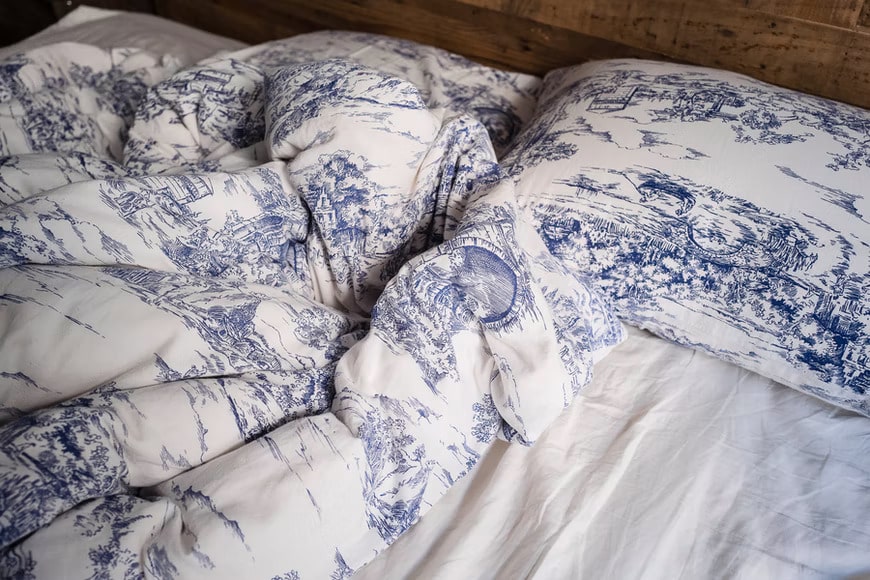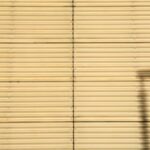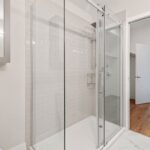Duvet Inserts, Getting that perfect night of rest requires bedding that matches your unique sleeping style and preferences. However, sometimes bedding terminology can be a bit confusing, making it difficult to know where to start due to the plenty of terms being thrown around.
There are duvet covers, duvet inserts, and then just duvets. All these bedding elements might come across as a mandatory investment but is a duvet insert really necessary. Does your duvet cover need an insert? Well, let’s first break down these bedding definitions.
Table of Contents
What is a Duvet?

In basic terms, a duvet is a quilted blanket stuffed with a synthetic or natural filling such as down or down alternatives that is upholstered by an interchangeable cover.
It is often confused with a quilt or comforter, but it has a distinct top layer that enables you to personalize your bedding throughout the year. Unlike a comforter (which will define in a while) a duvet’s unique pillow-like structure traps heat without weighing you down.
The term duvet is used applied a bit more generally in Europe but in the US, Duvets are defined as a quilted insert unique from the comfort. Note that duvets are not the same as blankets. A duvet is usually thicker and filled with wool, down, or polyester while a blanket does not carry any sort of cover- it is used on its own.
Duvet vs Comforter: Are they the same?
If you are wondering whether a duvet is the same as a comforter, then the answer is yes and no. A comforter is typically a single unit, not separate like a duvet which- as mentioned before- incorporates a duvet insert and a duvet cover.
That said, they’re both meant for the same overall function which is to cover you and keep you warm while you sleep. If you would like to protect your comforter, you can always use a duvet cover in the same way you would with an insert.
What is a Duvet Cover?
On a basic level, a duvet cover is a fabric case that fits around the duvet itself and closes with buttons, zippers or snaps. It allows easier washing, flexible design and typically different feel under the covers.
Duvet covers are basically made of cotton and are meant to protect the duvet insert. You can always throw the cover in the wash instead of worrying about washing an entire duvet. The duvet cover also adds colors and patterns to your bedding, although you can choose to go with neutrals if you prefer a minimal look.
So, what is a Duvet Insert?
Duvets insert are designed to be draped over the bed, covering the user just like a comforter. Although some duvets inserts are filled with synthetic materials such as polyester, some are filled with wool and covered in organic cotton.
Wool, in itself, is an amazing natural fiber due to its ability to wick away moisture and keep the user cool during the warmer months and warm during chilly climates. Wool is very breathable and helps regulate temperature much better than synthetics.
Another thing worth mentioning is that most duvets inserts are a neutral color, such as cream or white. This is because they are mostly used a more colorful duvet cover.
Does A Duvet Cover Need An Insert?
The simple answer is that a duvet cover does not require an insert. It is not even mandatory and it can be used on its own. However, the results will suffer. Mostly, duvets inserts are used to maintain the cover’s shape and enhance its longevity.
Although it is not mandatory, experts still recommend investing in a good duvet insert for your duvet cover. Below are the advantages of a duvet insert and why it is recommended to find the right one for your cover:
Enhances Longevity
The right duvet insert will definitely provide a significant increase in the duvet’s longevity. This is because the insert will protect the shape of the cover. Instead of leaving it to fold along the corners or begin tearing at the seams, the insert is perfectly shaped to keep the cover together. It also makes it easier to move around at night.
Keeps the Duvet Clean
Assuming you are placing the insert on top of the bed, the insert will serve as a protective net for the other bedding materials. The main reason behind this is how it maintains the duvet’s cover shape. When the shape remains intact as the whole thing moves around, the rest of the bedding remains clean.
With other alternatives, it is easy for the duvet cover to shuffle around and leave everything exposed. This turns out to e one of the most underrated benefits of a duvet insert. Consider using one and you’ll notice a difference.
Prevents Shedding

Shedding is definitely a major concern when it comes to the comforter. What you need is a duvet insert that serves as a protective layer so that the cover keeps its shape. By doing so, you achieve better control over the shedding process with a comforter or other bedding elements.
This aspect is particularly important for those who don’t want to keep cleaning the shedding material in their bed. Duvet inserts become an ideal solution to prevent shedding with a bit of care on your end.
Best Inserts to Put in a Duvet Cover
The most recommended type of insert for a duvet cover is a down comforter. This will help your duvet cover to hold its shape, maximize comfort, and even make it last longer. Provided the sizing is correct, the down comforter will add significant value to the bedding.
Having said that, take your time when choosing the right duvet insert. The wrong insert will possibly lead to your cover losing its shape and breaking down. This mostly occurs when the sizing is off or the inner material is rough. The wrong insert can also disrupt your sleep.
Look for something that will fit perfectly as soon as it is added to the duvet cover. The right duvet insert should sit snugly against the corners once inside.
For better results, you might want to invest in four duvet clips. They will help to hold the insert inside and make sure it doesn’t shuffle around every time you move the cover.


